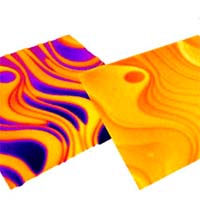 Elbow mentality in a two-dimensional material: While growing, the material simply pushes interfering steps on the substrate out of the way.
Elbow mentality in a two-dimensional material: While growing, the material simply pushes interfering steps on the substrate out of the way.
Monday, April 26, 2021
Synthesis of large-area 2D material: Atomic layer pushes surface steps away
 Elbow mentality in a two-dimensional material: While growing, the material simply pushes interfering steps on the substrate out of the way.
Elbow mentality in a two-dimensional material: While growing, the material simply pushes interfering steps on the substrate out of the way.
Why do some alloys become stronger at room temperature?
 Age hardening and creating strong metal mixtures are clearly very important in an industrial context. But very few researchers and people in the industry have cared much about what the clusters actually consist of. They were simply too small to prove.
Age hardening and creating strong metal mixtures are clearly very important in an industrial context. But very few researchers and people in the industry have cared much about what the clusters actually consist of. They were simply too small to prove.
Novel nanocomposite removes copper and arsenic to avoid livestock industry contamination
 Researchers have develop a nanocomposite to remove Cu(II) and As(III) simultaneously.
Researchers have develop a nanocomposite to remove Cu(II) and As(III) simultaneously.
Friday, April 23, 2021
Nanoantennas pave the way to compact petahertz oscilloscopes
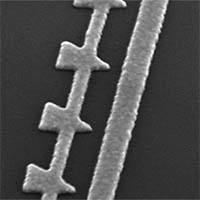 A team of researchers has succeeded in generating electron pulses with a duration of only a few hundred attoseconds on metallic nanoantennas and used them to measure extremely weak electric fields.
A team of researchers has succeeded in generating electron pulses with a duration of only a few hundred attoseconds on metallic nanoantennas and used them to measure extremely weak electric fields.
Watching the evolution of nanostructures in thin films
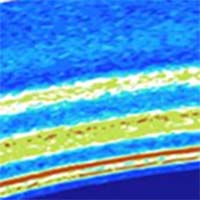 Scientists have found a way to turn X-ray fluorescence into an ultra-high position-sensitive probe to measure internal nanostructures in thin films that can be a hundred times finer than a human hair.
Scientists have found a way to turn X-ray fluorescence into an ultra-high position-sensitive probe to measure internal nanostructures in thin films that can be a hundred times finer than a human hair.
Synthesis method expands material possibilities
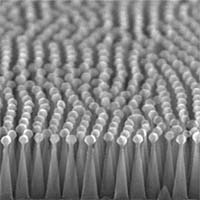 Scientists are making functional inorganic and 'hybrid' materials - those containing both inorganic and organic components - with tunable properties for a wide range of applications, including microelectronics, sensing, and clean energy.
Scientists are making functional inorganic and 'hybrid' materials - those containing both inorganic and organic components - with tunable properties for a wide range of applications, including microelectronics, sensing, and clean energy.
Online talk: What are 2D materials good for?
 The grand finale of CARBONLINEHAGEN 2021 is approaching. Monday, April 26, 16.00 CET will be the last talk this year, and will end with a topic most of us are - or should be - interested in: what 2D materials are good for.
The grand finale of CARBONLINEHAGEN 2021 is approaching. Monday, April 26, 16.00 CET will be the last talk this year, and will end with a topic most of us are - or should be - interested in: what 2D materials are good for.
With new optical device, engineers can fine tune the color of light
 A new sort of optical device allows engineers to change the frequencies of individual photons, putting new capabilities in engineers' hands.
A new sort of optical device allows engineers to change the frequencies of individual photons, putting new capabilities in engineers' hands.
Graphene-based 3D motion tracking system could streamline vision for autonomous tech
 A new real-time, 3D motion tracking system combines transparent light detectors with advanced neural network methods to create a system that could one day replace LiDAR and cameras in autonomous technologies.
A new real-time, 3D motion tracking system combines transparent light detectors with advanced neural network methods to create a system that could one day replace LiDAR and cameras in autonomous technologies.
Thursday, April 22, 2021
Nanofiltration membranes to treat industrial wastewater from heavy metals
 Researchers have developed innovative membranes for the complete removal of heavy metals from industrial wastewater. The special nanostructure of zinc-modified aluminum oxide made it possible to remove arsenic and lead from water with an efficiency of 87% and 98%, respectively.
Researchers have developed innovative membranes for the complete removal of heavy metals from industrial wastewater. The special nanostructure of zinc-modified aluminum oxide made it possible to remove arsenic and lead from water with an efficiency of 87% and 98%, respectively.
Transport phenomena at the nanoscale
 Scientists have exploited the so-called Talbot effect to create the interference pattern with hard X-ray beams at a subnanometer wavelength (0.17 nm).
Scientists have exploited the so-called Talbot effect to create the interference pattern with hard X-ray beams at a subnanometer wavelength (0.17 nm).
Breakthrough in materials discovery enables 'twistronics' for bulk systems
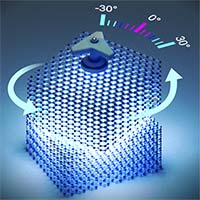 The findings allow manipulation of materials for the first time by stacking films at a twist angle, allowing a new way to control light emitting from materials.
The findings allow manipulation of materials for the first time by stacking films at a twist angle, allowing a new way to control light emitting from materials.
Eliminating dangerous bacteria with nanoparticles
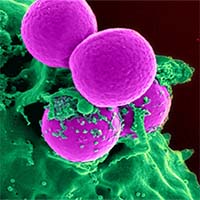 Researchers are developing nanoparticles that can be used to detect and kill multi-resistant pathogens that hide inside our body cells.
Researchers are developing nanoparticles that can be used to detect and kill multi-resistant pathogens that hide inside our body cells.
Wednesday, April 21, 2021
The sweet taste of success for a supported nickel phosphide nanoalloy catalyst
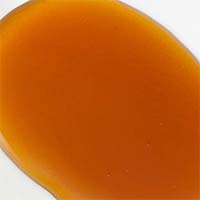 Researchers report a nickel phosphide nanoalloy catalyst that cooperates with its support to give high activity for the selective conversion of maltose to maltitol.
Researchers report a nickel phosphide nanoalloy catalyst that cooperates with its support to give high activity for the selective conversion of maltose to maltitol.
Identification of the wettability of graphene layers at the molecular level
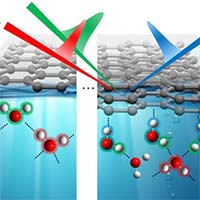 Scientists identify the wettability of graphene layers and improve the understanding of graphene interface properties at molecular levels.
Scientists identify the wettability of graphene layers and improve the understanding of graphene interface properties at molecular levels.
Rapid characterisation of carbon 2D materials
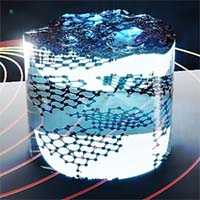 Scientists use Nuclear Magnetic Resonance Proton Relaxation to probe the surface chemistry of nanomaterial dispersions.
Scientists use Nuclear Magnetic Resonance Proton Relaxation to probe the surface chemistry of nanomaterial dispersions.
Electrifying cement with nanocarbon black
 Researchers have created a cement that conducts electricity and generates heat.
Researchers have created a cement that conducts electricity and generates heat.
How does Gecko tape work?
 Its name suggests that the tape and the gecko stick in similar ways, but is the underlying physics indeed the same?
Its name suggests that the tape and the gecko stick in similar ways, but is the underlying physics indeed the same?
Sustainable chemical synthesis with platinum nanoparticles
 A new catalyst allows wood to replace petroleum in hydrocarbon synthesis.
A new catalyst allows wood to replace petroleum in hydrocarbon synthesis.
Helpful, engineered 'living' machines in the future?
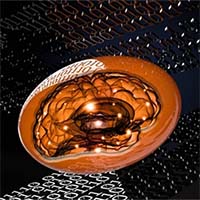 New soft, responsive metamaterial holds potential for wide variety of societal benefits.
New soft, responsive metamaterial holds potential for wide variety of societal benefits.
Tuesday, April 20, 2021
AI agent helps identify material properties faster
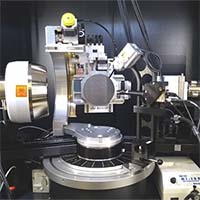 Researchers have refined an algorithm so that it works together with humans and supports decision-making processes. As a result, promising new materials can be identified more quickly.
Researchers have refined an algorithm so that it works together with humans and supports decision-making processes. As a result, promising new materials can be identified more quickly.
Novel perovskite catalyst for lower CO2 emissions
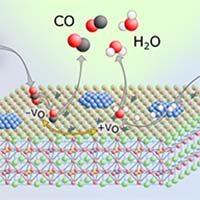 Perovskites have so far been used for solar cells, as anode materials or electronic components rather than for their catalytic properties. Now scientists have succeeded in producing a special perovskite that is excellently suited as a catalyst for converting CO2 into other useful substances, such as synthetic fuels.
Perovskites have so far been used for solar cells, as anode materials or electronic components rather than for their catalytic properties. Now scientists have succeeded in producing a special perovskite that is excellently suited as a catalyst for converting CO2 into other useful substances, such as synthetic fuels.
Insights into new 'dials' for controlling a material's magnetism
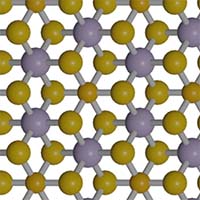 New research demonstrates how small amounts of strain can be used to control a material’s properties, with possible applications ranging from spintronic devices to faster hard drives.
New research demonstrates how small amounts of strain can be used to control a material’s properties, with possible applications ranging from spintronic devices to faster hard drives.
Bio-nanocellulose meshes improve hernia repair surgery
 Bacterial nanocellulose is an emergent biocompatible natural polymer with increasing applicability in the healthcare sector. A potential innovative application can be found in the design of surgical meshes for the treatment of abdominal hernias.
Bacterial nanocellulose is an emergent biocompatible natural polymer with increasing applicability in the healthcare sector. A potential innovative application can be found in the design of surgical meshes for the treatment of abdominal hernias.
2D nanomaterial MXene: the perfect lubricant
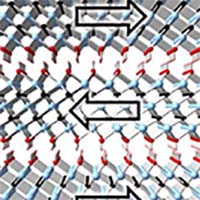 In extreme heat or in the vacuum of space: MXene delivers top performance in extreme situations.
In extreme heat or in the vacuum of space: MXene delivers top performance in extreme situations.
Going lower than the lowest computer energy consumption thought possible to defeat Boltzmann's tyranny
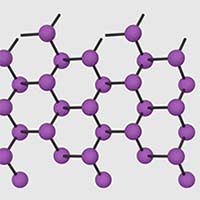 New research confirms the potential for topological materials to substantially reduce the energy consumed by computing.
New research confirms the potential for topological materials to substantially reduce the energy consumed by computing.
Monday, April 19, 2021
Surprising ionic and flow behaviors with functionalized nanochannels
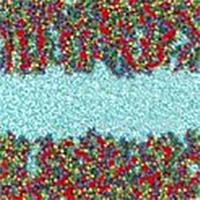 Nanochannels have important applications in biomedicine, sensing, and many other fields. Though engineers have been fabricating these tiny, tube-like structures for years, much remains unknown about their properties and behavior. Now, engineers have published surprising new findings.
Nanochannels have important applications in biomedicine, sensing, and many other fields. Though engineers have been fabricating these tiny, tube-like structures for years, much remains unknown about their properties and behavior. Now, engineers have published surprising new findings.
DNA nanorobots designed in minutes instead of days
 Researchers have developed a new tool that can design much more complex DNA robots and nanodevices than were ever possible before in a fraction of the time.
Researchers have developed a new tool that can design much more complex DNA robots and nanodevices than were ever possible before in a fraction of the time.
Cotton wool proves effective in separating single-wall carbon nanotubes
 Researchers propose a new, cost effective separation method, suitable for the industrial scale processing of carbon nanotubes. The method of separation is based on passing the CNTs surfactant solution through a column filled with chemically modified cotton wool.
Researchers propose a new, cost effective separation method, suitable for the industrial scale processing of carbon nanotubes. The method of separation is based on passing the CNTs surfactant solution through a column filled with chemically modified cotton wool.
A microscopic polymeric network attacks glioblastoma multiforme with nanomedicine
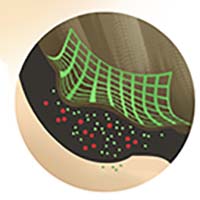 Researchers have demonstrated, with preclinical studies, the effectiveness of a new biomedical implant - the microMESH - for the treatment of glioblastoma multiforme.
Researchers have demonstrated, with preclinical studies, the effectiveness of a new biomedical implant - the microMESH - for the treatment of glioblastoma multiforme.
Understanding interfaces of hybrid materials with machine learning
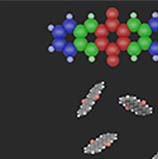 Pyhsicists are able to devise a design principle for the self-assembly of functionalized molecules.
Pyhsicists are able to devise a design principle for the self-assembly of functionalized molecules.
Scientists now able to map defects in 2D crystals in liquid
 A team of scientists has studied the behavior of defects on 2D crystals in water in order to better understand the crystals' properties and assess their quality.
A team of scientists has studied the behavior of defects on 2D crystals in water in order to better understand the crystals' properties and assess their quality.
Tracking topological conditions in graphene
 International research team shows how carbon-based nanostructures can get a new functionality.
International research team shows how carbon-based nanostructures can get a new functionality.
Friday, April 16, 2021
Generation of super-resolved optical needle and multifocal array using graphene oxide metalenses
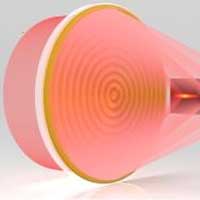 Compared to conventional lenses, metalenses can improve the image quality of current cameras, by enhancing resolution and removing spherical and chromatic aberrations.
Compared to conventional lenses, metalenses can improve the image quality of current cameras, by enhancing resolution and removing spherical and chromatic aberrations.
Research finds a potential new 'silver bullet' nanoparticle to treat brain cancer
 The study characterised and evaluated the properties of nanoparticles made from lanthanum manganite, that were doped with silver atoms.
The study characterised and evaluated the properties of nanoparticles made from lanthanum manganite, that were doped with silver atoms.
New nanoscale device for spin technology
 Spin waves could unlock the next generation of computer technology, a new component allows physicists to control them.
Spin waves could unlock the next generation of computer technology, a new component allows physicists to control them.
Oxygen migration enables ferroelectricity on nanoscale
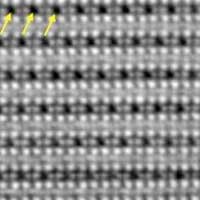 Hafnium-based thin films, with a thickness of only a few nanometres, show an unconventional form of ferroelectricity. This allows the construction of nanometre-sized memories or logic devices.
Hafnium-based thin films, with a thickness of only a few nanometres, show an unconventional form of ferroelectricity. This allows the construction of nanometre-sized memories or logic devices.
Dye-based device sees the invisible
 Devices that can see shortwave infrared light, which is invisible to the naked eye, could soon become cheaper and more accessible to a broader consumer base.
Devices that can see shortwave infrared light, which is invisible to the naked eye, could soon become cheaper and more accessible to a broader consumer base.
The whitest paint is here - and it's the coolest. Literally.
 In an effort to curb global warming, engineers have created the whitest paint yet. Coating buildings with this paint may one day cool them off enough to reduce the need for air conditioning, the researchers say.
In an effort to curb global warming, engineers have created the whitest paint yet. Coating buildings with this paint may one day cool them off enough to reduce the need for air conditioning, the researchers say.
Thursday, April 15, 2021
Self-built protein coatings could improve biomedical devices
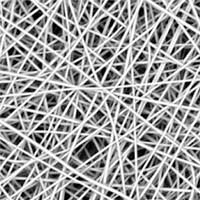 Engineers explore protein self-assembly as improved coating process.
Engineers explore protein self-assembly as improved coating process.
Water purification system engineered from wood, with help from a microwave oven
 Researchers have developed a more eco-friendly way to remove heavy metals, dyes and other pollutants from water. The answer lies in filtering wastewater with a gel material taken from plant cellulose and spiked with small carbon dots produced in a microwave oven.
Researchers have developed a more eco-friendly way to remove heavy metals, dyes and other pollutants from water. The answer lies in filtering wastewater with a gel material taken from plant cellulose and spiked with small carbon dots produced in a microwave oven.
A three-shell nanoreactor for functionalized fullerene
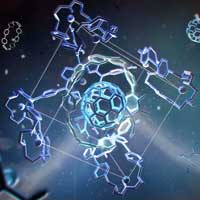 Researchers have used a three-shell 'Russian doll' architecture to solve a long-standing problem in chemical synthesis of fullerenes.
Researchers have used a three-shell 'Russian doll' architecture to solve a long-standing problem in chemical synthesis of fullerenes.
First 3D-printed proton-conductive membrane paves way for tailored energy storage devices
 A research team based has 3D printed the first proton exchange membrane, a critical component of batteries, electrochemical capacitors and fuel cells.
A research team based has 3D printed the first proton exchange membrane, a critical component of batteries, electrochemical capacitors and fuel cells.
Wednesday, April 14, 2021
Detoxifying exhaust gas from device production processes
 A newly developed abatement system can be simply applied to exhaust gases containing flammable gases requiring nitrogen gas dilution other than silane gas by optimizing the processing conditions, without changing the device structure.
A newly developed abatement system can be simply applied to exhaust gases containing flammable gases requiring nitrogen gas dilution other than silane gas by optimizing the processing conditions, without changing the device structure.
3D-printed graphene aerogels for water treatment
 Engineers report a new process of 3D printing graphene aerogels that they say overcomes two key hurdles - scalability and creating a version of the material that’s stable enough for repeated use - for water treatment.
Engineers report a new process of 3D printing graphene aerogels that they say overcomes two key hurdles - scalability and creating a version of the material that’s stable enough for repeated use - for water treatment.
Tuesday, April 13, 2021
Superbug killer: New nanotechnology destroys bacteria and fungal cells
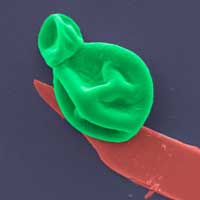 Researchers have developed a new superbug-destroying coating that could be used on wound dressings and implants to prevent and treat potentially deadly bacterial and fungal infections. The material is one of the thinnest antimicrobial coatings developed to date and is effective against a broad range of drug-resistant bacteria and fungal cells, while leaving human cells unharmed.
Researchers have developed a new superbug-destroying coating that could be used on wound dressings and implants to prevent and treat potentially deadly bacterial and fungal infections. The material is one of the thinnest antimicrobial coatings developed to date and is effective against a broad range of drug-resistant bacteria and fungal cells, while leaving human cells unharmed.
New nanosensor holds promise for diagnosing, treating neurological disease
 Scientists have developed a new type of nanosensor that allows scientists to image communication between the brain and the body in real time.
Scientists have developed a new type of nanosensor that allows scientists to image communication between the brain and the body in real time.
New sensor tracks 'stress hormone' in real time
 Researchers have developed a fluorescence-based sensor prototype for continuous detection of cortisol concentrations in real time, which can help monitor various health conditions.
Researchers have developed a fluorescence-based sensor prototype for continuous detection of cortisol concentrations in real time, which can help monitor various health conditions.
Combining nanomaterials in 3D to build next-generation imaging devices
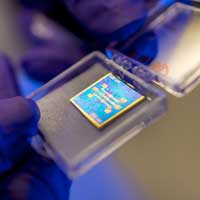 Researchers are integrating different nanoscale materials together in 3D to create an entirely new generation of devices for environmental monitoring, energy harvesting and biomedical applications.
Researchers are integrating different nanoscale materials together in 3D to create an entirely new generation of devices for environmental monitoring, energy harvesting and biomedical applications.
Subscribe to:
Posts (Atom)

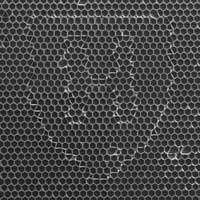 Researchers reconfigure material topology on the microscale.
Researchers reconfigure material topology on the microscale.